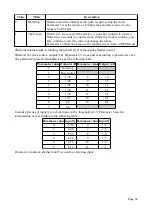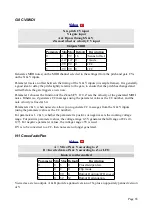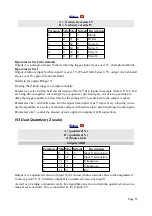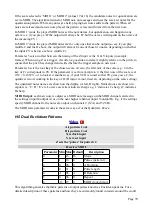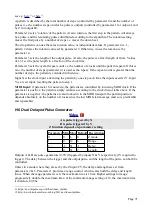
Viewed as mono outputs, A provides a crossfaded mix of X & Y, while B provides a mix with an
inverted mix control.
In both cases Z provides the pan position or crossfade amount. When Z is turned, the crossfade
position is displayed as a percentage (so 50% is an equal mix of the two sources/centre pan).
Parameter 0 sets the pan/crossfade law:
0
Equal gain
Appropriate for crossfading phase-coherent material.
1
Equal power Appropriate for crossfading non-phase-coherent material.
2
Transition
DJ-style crossfade where both sources are at full gain at the 50% position.
3
FX Loop
Output A is unattenuated input X plus a faded amount of input Y.
Parameter 1 sets the clipping/saturation mode, for when the mix of the inputs exceeds the dynamic
range of the output:
0
Legacy
The behaviour pre-firmware 4.8, which could cause digital overflows and
fairly drastic wavefolding-type sounds.
1
Hard clip
A hard digital clip is applied.
2
Soft clip
A soft clip/saturation is applied.
Parameter 2 controls the function of output B:
-1
Copy
Output B follows input X.
0
Normal
Normal crossfade/pan function.
1-99
LFO
Output B is a ±5V triangle wave LFO, the speed of which is set from the
parameter.
Parameter 3 attenuates output B (in all modes).
FX Loop usage
A combination of parameters 0 and 2 can be used to set up the disting as an effect loop controller, to
integrate external effect units (e.g. pedals, rack processors) into the modular.
Use input X as the main signal input. Setting parameter 2 to -1 makes output B a copy of the input,
attenuated by parameter 3, which can be sent to the effects unit.
Return the effected signal to input Y. There are then two options for how you want to mix in the
effect. With parameter 0 at 0, 1, or 2, the Z knob/CV gives you a wet/dry mix control. With
parameter 0 at 3, the amount of input X in the mix is constant, so Z gives you a simple fader on the
effect return.
H-2 Dual Sample and Hold
Page 66











